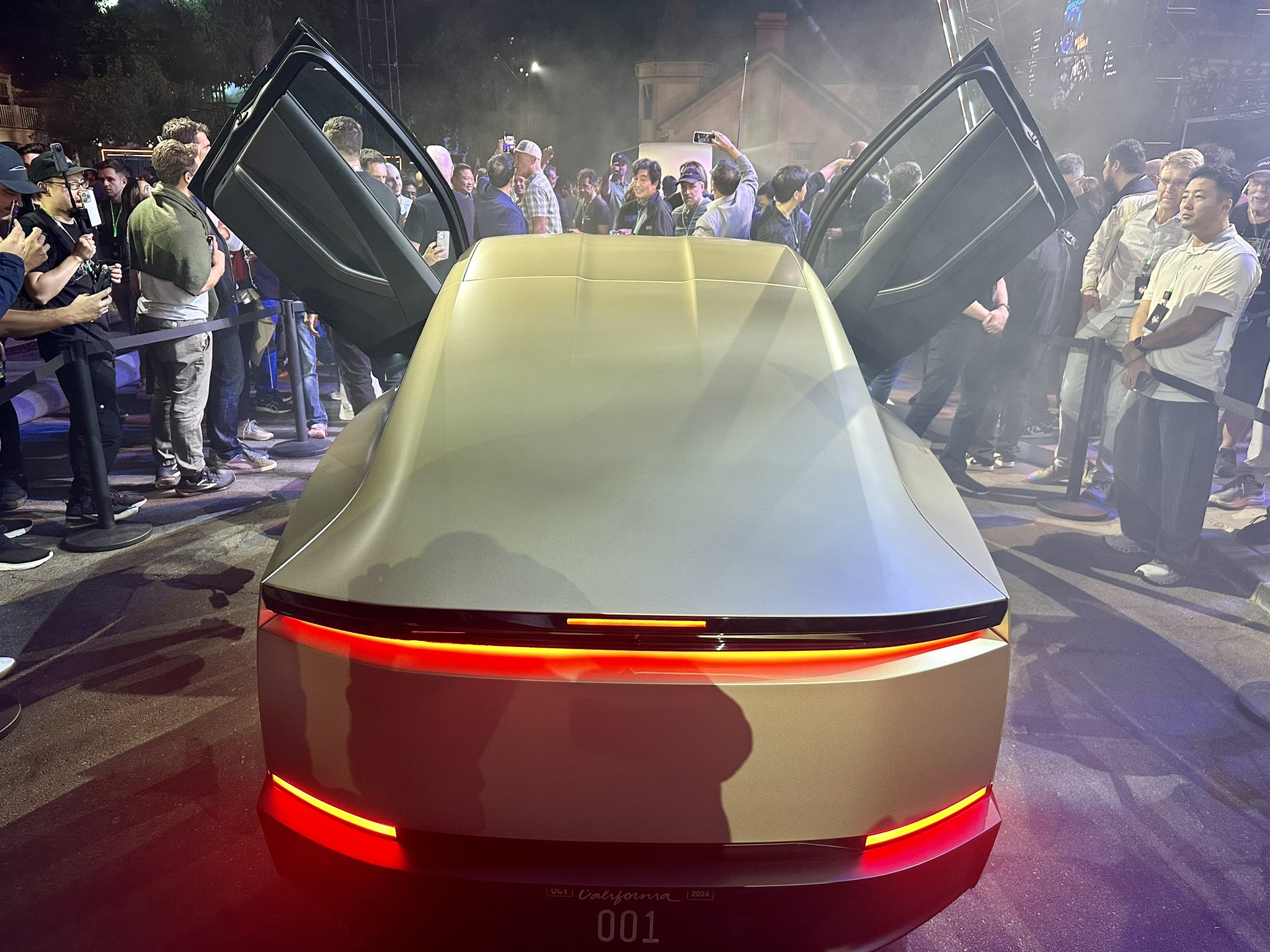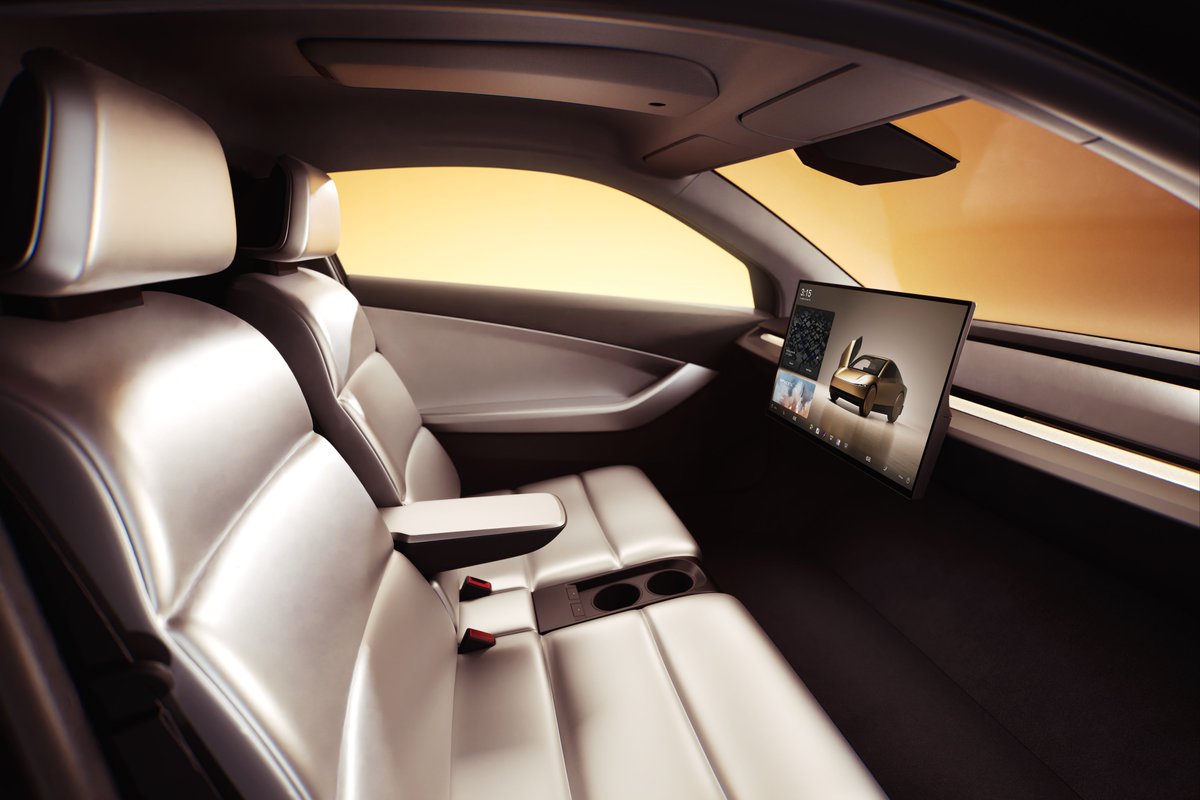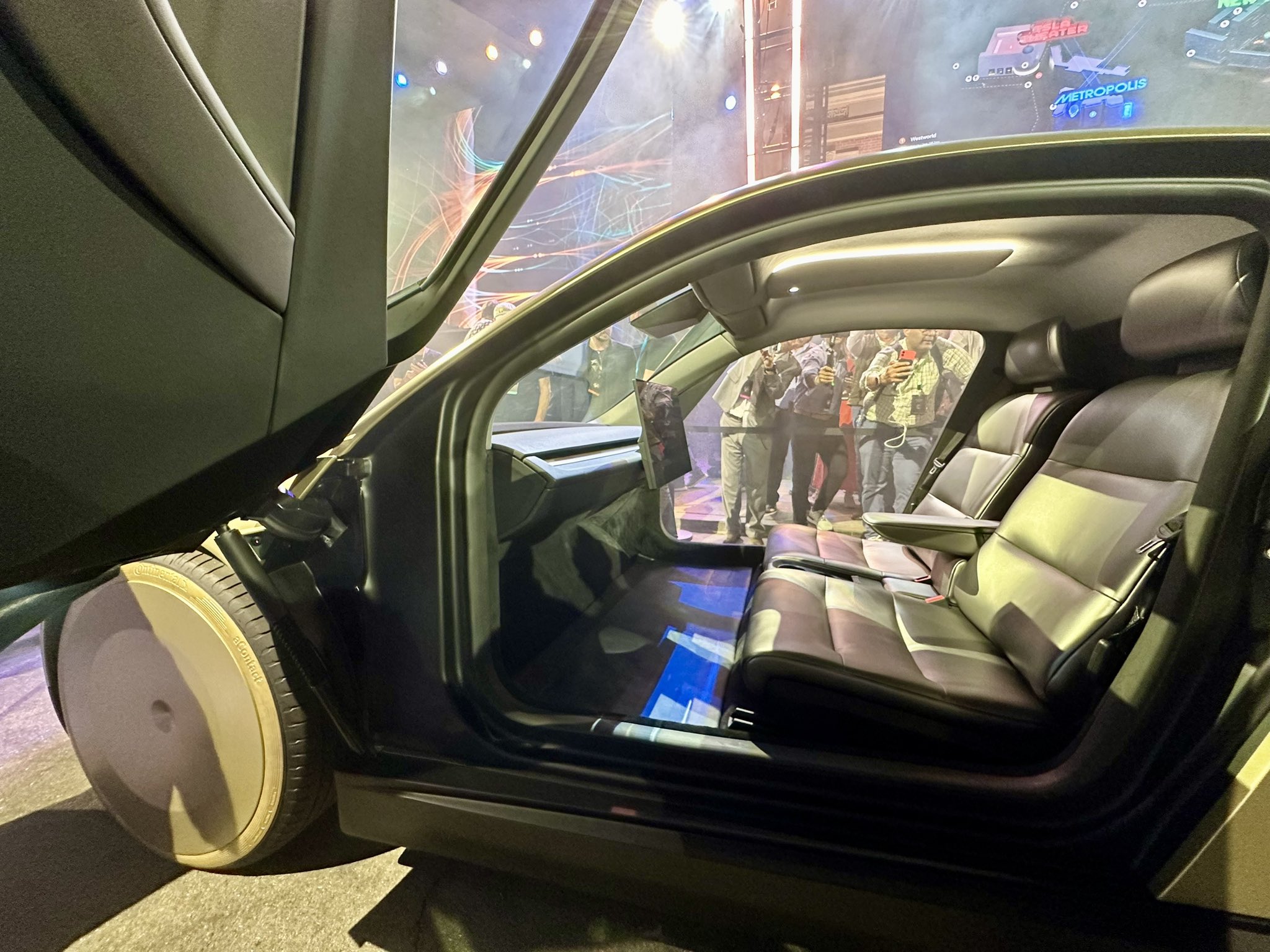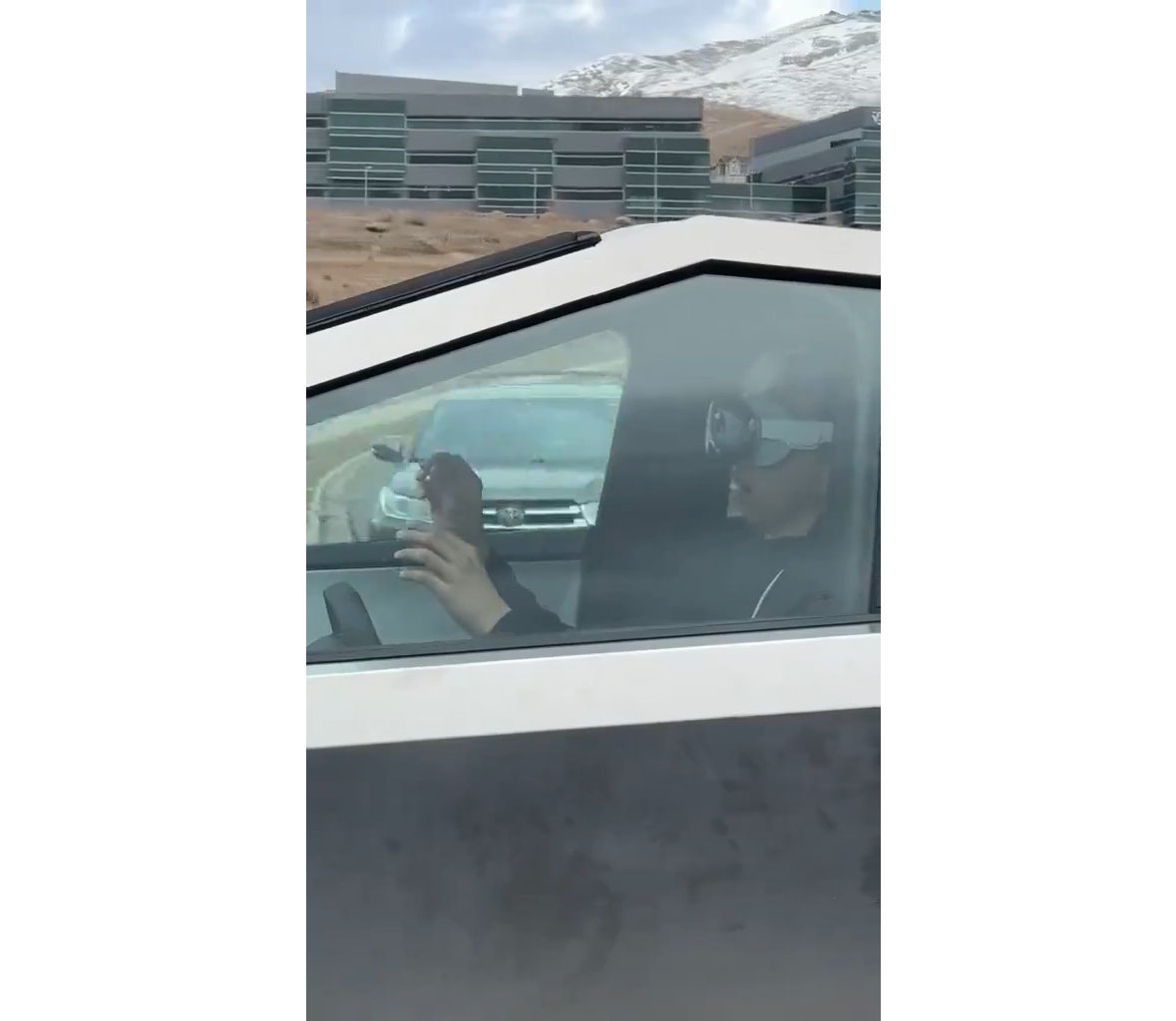Mixed reactions as Elon Musk hypes $30,000 ‘self driving’ robotaxi called Cybercab, as well as larger Robovan
Elon Musk on Thursday finally unveiled its ‘self driving’ robotaxi concept called Cybercab, after a decade of promises that failed to materialise.
At the “We, Robot” event at the Warner Bros. studio in Burbank, California, Elon Musk arrived almost an hour after the unveiling was supposed to begin, CNBC reported.
Musk then showed off Tesla’s low two-seater Cybercab, which he said was a “fully autonomous” vehicle with no steering wheel or pedals for drivers.
But investors were not impressed, and shares in Tesla fell nearly 6 percent to $238.77 in pre-market trading on Friday.
Image credit Tesla
Tesla Cybercab
It comes after Tesla had said in July it would delay its robotaxi concept launch to integrate an “important” design change to the front of the vehicle and “show off a few other things”.

Image credit Tesla
According to the CNBC report of the launch, Musk said the company had 21 of the Cybercab, and a total of 50 “autonomous” cars on-location at the Warner Bros. Studio.

Image credit Tesla
But Musk offered no details about exactly where Tesla plans to produce the cars. However he did say consumers would be able to buy a Tesla Cybercab for below $30,000, mirroring previous Musk’s promises of reasonable priced EVs (such as the Cybertruck), which when actually launched cost a lot more.
ELON’S WE,ROBOT KEYNOTE – THIS IS THE WORLD WE WANT
02:00 Elon takes to the stage
03:40 What kind of world do we want to live in?
04:05 Today’s transportation sucks
05:10 Cars cost too much for many people
07:48 Robotaxi: Premium point-to-point transportation
11:14 One… pic.twitter.com/5uQ6HwWN8o
— Mario Nawfal (@MarioNawfal) October 11, 2024
And don’t expect Cybercab any time soon, after Musk said Tesla hopes to be producing the robotaxi before 2027.

Image credit Tesla
Autonomous driving?
Musk also reportedly said he expects Tesla to have “unsupervised FSD” up and running in Texas and California next year in the company’s Model 3 and Model Y electric vehicles.
Tesla of course has two driver assistance programs. All new Tesla vehicles have the standard driver assistance system installed called Autopilot.
But Tesla also sells the more advanced FSD option for $12,000 upfront, and a monthly charge of $199. This enables Tesla vehicles to change lanes and park autonomously.
Tesla’s FSD system however does not currently turn cars into autonomous self-driving vehicles, despite many instances of drivers grossly misusing these systems – for example by sleeping behind the wheel, or being distracted by using Apple’s Vision Pro headsets while driving.

Indeed, FSD currently requires a human driver at the wheel, ready to steer or brake at any time.
“It’s going to be a glorious future,” Musk was quoted by CNBC as saying on Thursday night.
Tesla Robovan
Musk also revealed plans to produce an autonomous, electric Robovan that can carry up to 20 people, or be used to transport goods, CNBC reported.

Image credit Tesla
Musk said it will “solve for high density,” transporting a sports team, for example.

Image credit Tesla
He said the Cybercab and Robovan would employ inductive charging, which means these EVs may not need to be physically plugged in when at an EV charging station.
At Thursday night’s event, which Musk previously characterised as a “product launch,” he welcomed attendees to “party,”. He said attendees would be able to take test rides in the autonomous vehicles on location, in the closed environment of the movie studio lots.
Toward the end of his 23 minutes on stage, the Tesla CEO said he wanted to show its humanoid robot in development (Optimus).
![]()
“The Optimus robots will walk among you,” then he asked attendees to “be nice” to the robots, which would be serving drinks at a bar on site, CNBC reported.
Missed deadlines
Musk has touted robotaxis for years and has repeatedly missed his own stated deadlines.
In 2015, Musk told shareholders that Tesla cars would achieve “full autonomy” within three years.
Then in 2016 Musk touted robotaxis in a 2016 “master plan”, and promised Tesla fans a self-driving car that was capable of driving from Los Angeles to New York without “the need for a single touch” by the end of 2017.
Then in 2019, Musk raised billions of dollars for Tesla by promising investors the company would have 1 million “robotaxi ready” cars on the road by the end of 2020.
In July 2020, Elon Musk said that Tesla was “very close” to achieving level 5 autonomous driving technology.
Level 5 is the holy grail of autonomous driving technology, as level 5 vehicles will not require human intervention, and need for a human drivers is eliminated.
Tesla cars currently operate at a level-two, which requires the driver to remain alert and ready to act, with hands on the wheel.
The Thursday event of the Cybercab and Robovan was Tesla’s first product unveiling since the company showed off the design for its Cybertruck in 2019, which included an embarrassing launch gaffe when the vehicle’s windows shattered during an attempt to demonstrate their durability.
That angular steel pickup only began shipping to customers in late 2023, and has been the subject of five voluntary recalls since then.
